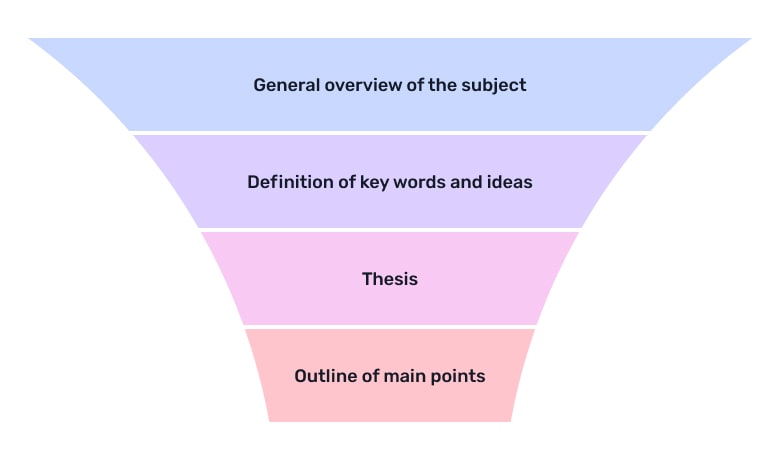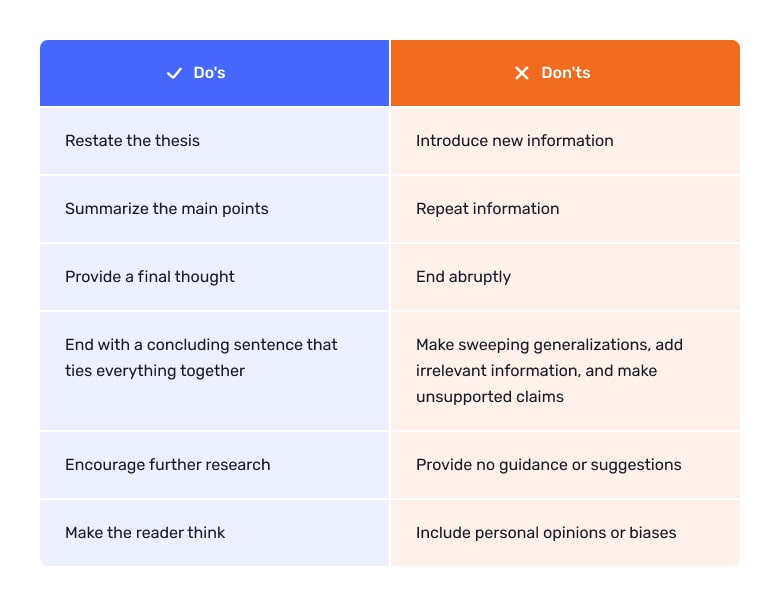Proper Introduction & Conclusion
Writing a research paper is a challenging task that requires organization, research skills, and good writing skills. Two crucial sections of a research paper are the introduction and conclusion, as they set the tone for the paper and summarize the writer’s final thoughts on the subject. In this guide, we will provide detailed information on how to write an effective introduction and conclusion in a research paper.
Writing a Good Introduction

Start with a hook
The introduction is the first section of the paper, and it serves to introduce the topic to the reader. An effective introduction should start with a hook, which can be an attention-grabbing statement that captures the reader’s interest. This can be a quote, an anecdote, or a startling statistic. For example, if you are writing a paper about the impact of climate change, you can start with a quote from a climate scientist about the urgency of the issue.
Provide background information
The next step is to provide background information on the topic. This helps the reader to understand the context of the paper. The background information can be a brief history of the topic or a summary of the current state of research on the topic. For example, if you are writing a paper about the history of the civil rights movement, you can provide a brief overview of the major events and figures involved in the movement.
State your thesis
The thesis statement is the central argument of the paper, and it should be clear and concise. The thesis statement should appear at the end of the introduction, and it should be supported by the main points of the paper. For example, if you are writing a paper about the benefits of exercise, your thesis statement could be: “Regular exercise can improve physical health, mental health, and overall quality of life.”
Preview the main points
Finally, it is important to preview the main points of the paper. This helps to provide an overview of what the reader can expect to find in the paper. The main points can be presented as a list or a brief summary of each point. For example, if you are writing a paper about the benefits of exercise, you can preview the main points by saying: “This paper will discuss the physical health benefits of exercise, the mental health benefits of exercise, and the impact of exercise on overall quality of life.”
Do’s and Don’ts

Writing a Good Conclusion
The conclusion is the final section of the paper, and it should summarize the key points of the paper and present your final thoughts on the subject.
Restate your thesis
An effective conclusion should start by restating the thesis statement in different words. This reminds the reader of the main argument of the paper. For example, if your thesis statement was “Regular exercise can improve physical health, mental health, and overall quality of life,” you can restate it in the conclusion by saying “In conclusion, exercise is a powerful tool that can benefit both physical and mental health, and improve overall quality of life.”
Summarize the Main Points
After restating your thesis, you need to summarize the main points of your paper in a concise manner. This helps to remind the reader of the main ideas presented in the paper. For example, “In conclusion, we have discussed the history of social media, its impact on mental health, and ways to mitigate the main ideas presented in the paper.” Or “Throughout this study, we have explored the various ways in which exercise can improve cardiovascular health, reduce stress levels, and boost cognitive function.”
Provide a final thought
End with a final thought or a call to action. This helps to leave the reader with something to think about and can encourage them to take action based on the information presented in the paper. Example: “As we continue to face a growing epidemic of sedentary lifestyles and chronic diseases, it is important that we prioritize regular exercise as a means of improving overall health and quality of life.”
Concluding sentence
End the conclusion with a concluding sentence that ties everything together. This can be a statement that emphasizes the importance of the topic or a suggestion for future research. Example: “By making exercise a regular part of our daily routine, we can all take steps towards living happier, healthier, and more fulfilling lives.”
Do’s and Don’ts

Remember, the conclusion is your final chance to pass on your key takeaways to the reader, so be sure to follow these guidelines to make it effective and memorable.
Overall, both the introduction and conclusion are essential sections of an academic paper. By following these guidelines, you can write an effective introduction and conclusion that will engage the reader and leave a lasting impression.